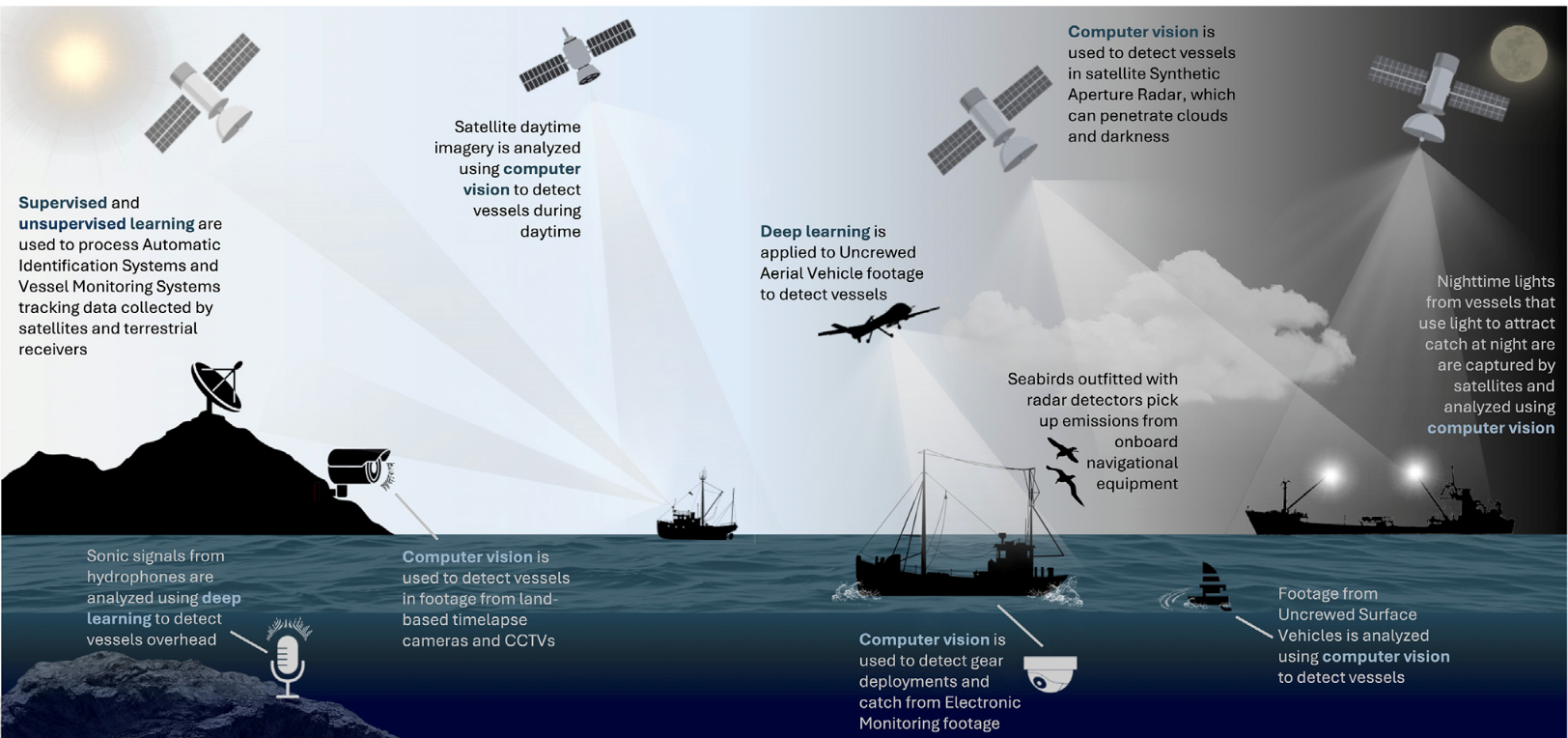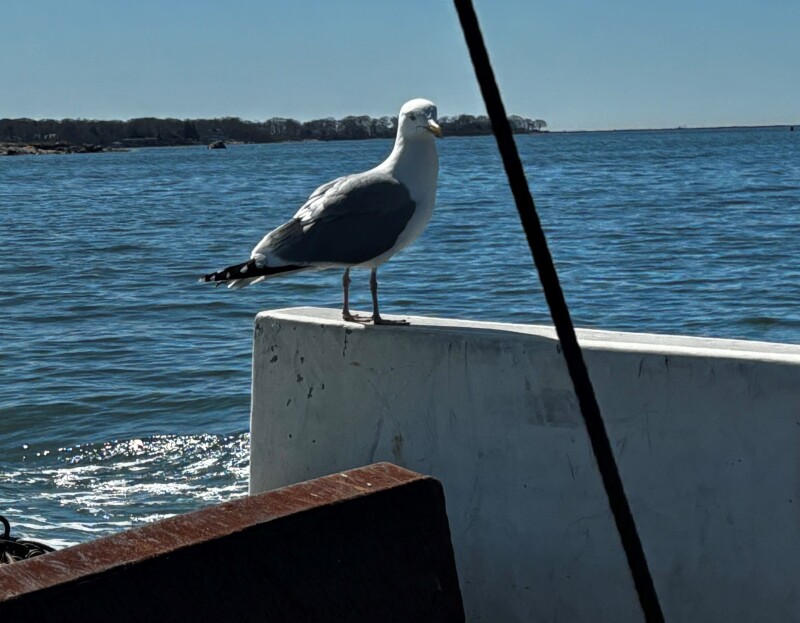In the past, when a fishing vessel disappeared over the horizon, that was it. Only the captain and crew knew what happened as gear was set and hauled. But as global landings have flatlined, illegal fishing has increased, sparking a need to track fishing vessels in an effort to stop IUU fishing.
Early this year, a study released in the digital journal Nature showed that around 75 percent of the world’s fishing fleets were operating under the radar. But in mid-October, another group of researchers released a paper describing how AI can expand surveillance of those fleets.

“IUU fishing results in up to $25 billion in annual economic losses, and fishing vessels engaged in IUU often commit human rights violations like human trafficking and modern slavery,” lead author Heather Welch, writes in the paper, Harnessing AI to map global fishing vessel activity. To combat abuse and overexploitation of the world’s fisheries, Welch notes that advances in AI are making it possible to more easily locate dark vessels, identify fishing activity, and process data produced by new monitoring techniques.
“A primary use of AI in fisheries tracking is the identification of fishing versus non-fishing activities; understanding when and where vessels fish is essential for monitoring fishing effort and enforcing regulations,” Welch and her co-authors write. “Vessels exhibit distinctive movement patterns that allow for the classification of their activities into categories such as fishing, resting, and transiting.”
Observers can now use computer vision to analyze data from various sources, including satellites that monitor lights, satellites that surveil vessels in daylight, satellites that can see through clouds, and, in some cases, shore-mounted cameras. In addition, they are gathering data from underwater hydrophones, onboard cameras, air and sea drones, and even seabirds fitted with radar detectors to pick up emissions from navigation equipment.
What the authors point out is that advances in AI and machine learning now make it possible to process the vast amount of data produced by these sources and more accurately identify fishing activity all over the world, particularly in the waters around Asia and Africa where vessel monitoring is less prevalent, and where it is believed most IUU fishing occurs. “Illuminating the locations and activities of untracked vessels—particularly those equipped with vessel tracking systems that then go dark—is a powerful first step toward identifying instances of IUU,” they write.
The authors' main drawback is that AI can make mistakes and display biases towards certain vessel sizes, ports, and gear types based on past enforcement actions. “To minimize harm, AI should enhance, rather than replace, human capabilities,” they point out. “Human oversight in the decision-making process remains essential for developing ethical AI systems, particularly with regard to value judgments.”







